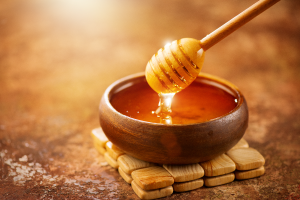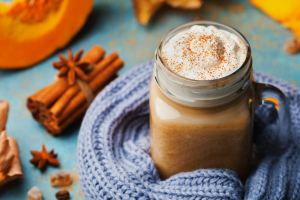

Nature is one of the most beautiful examples of the brilliance of God’s creation. More precisely, God has blessed humanity in numerous ways through the food we eat, which is a product of nature. Benefits of fruits and vegetables to human health are well documented. Additionally, the body must obtain various elements from a diet high in a range of fruits and green, leafy vegetables in order to perform at its best. You can choose from a wide variety of fruits and vegetables, and you could theoretically include as many as you can for a varied diet. However, things become even more exciting if you look a little closer. There are a lot of foods that look like body parts for which they are good.
The numerous health benefits that these fruits and vegetables have for various body parts seem to be God’s way of telling us to eat them. In this blog, we will discuss foods that look like body parts they are benefiting from.
Foods That Look Like Body Parts They are Good for
There are a variety of foods that look like body parts they provide health benefits for. Some of these foods may include:
1. Walnut = Brain
Walnuts show one of the clearest similarities between food and the human body. A walnut’s shape and the numerous folds and creases on it remarkably resemble the human brain. Additionally, it’s the most crucial nut for maintaining brain health. DHA, an omega-3 fatty acid, is found in walnuts at a remarkably high percentage. This fatty acid is very beneficial for maintaining the health of the brain and enhancing cognitive function in both infants and adults.
2. Celery = Bones
You’ve probably noticed that the stalks of a bunch of celery resemble our bones quite a bit. However, this dish has more in common with an organ than just looks. Our bones contain 23% more salt than celery does in their composition.
Despite the similarities, celery is especially good for your bones. Celery seeds’ high calcium and manganese content aid in boosting bone structure and mineral density for stronger, healthier bones.
3. Sweet Potato = Pancreas
The humble sweet potato is the next vegetable on our list, and it can be found in most kitchens. There’s a good reason why it resembles the pancreas so uncannily. It is a healthy food option in general and supports pancreatic health in a number of ways.
For the body to maintain healthy levels of glucose and sugar, our pancreas is in charge of digesting food after it has been swallowed and creating insulin. Because it can lower a person’s glycemic index and support pancreatic function, sweet potatoes are especially helpful for diabetics. It is known as one of the best health benefits foods.
4. Ginger = Stomach
This humble root, which roughly resembles the stomach, the major digestive organ of the body, is believed to help with digestion and has a number of medicinal uses.
Numerous stomach problems, such as nausea, colic, gas, diarrhoea, irritable bowel syndrome, morning sickness, and more, can be treated with ginger. Additionally, it strengthens the mucous layer of the stomach and aids in reducing stomach cramps and gas. It also aids in reducing the growth of intestinal cancers.
5. Red Wine = Blood
When you want to take your Halloween decorations to the next level, a tumbler of red wine can easily pass for blood. But red wine’s abundance of polyphenols and antioxidants has several advantages beyond just making things appear like blood. Blood clots may be prevented by their blood-thinning characteristics. Long-term prevention of heart attacks and strokes may result from this.
6. Carrot = Eyes
Carrots certainly don’t resemble our eyes at first glance. However, the similarities become more obvious when you slice one open and take a closer look. The patterns of lines extending outward, which mimic the iris and pupil, on a slice of a carrot are particularly similar to those on the human eye.
The plant component beta-carotene, which enhances eye health and safeguards vision, gives this vegetable its orange hue. Our bodies convert beta-carotene to vitamin A, which protects against cataract development and maintains the health of our eyesight.
7. Heart = Tomato
A tomato is red, like the heart, but there are other similarities as well. A tomato’s internal anatomy, which has four chambers, is similar to the heart. Regarding the advantages, lycopene, an antioxidant that lowers the risk of heart disease, is abundant in tomatoes.
Additionally, it guards against cancer-causing free radical damage to the cellular components. Additionally, it helps moderately to manage hypertension and high blood pressure, maintaining the health and strength of your heart.
8. Avocado = Womb
If you pay close attention, the form of an avocado resembles that of a woman’s uterus. And even better, this fruit is very good for the health of the womb. Folic acid, which is abundant in avocados, helps to reduce the risk of cervical dysplasia and prevent congenital disabilities.
Folic acid is advised by doctors for use by expectant mothers and women who are trying to conceive. Regular avocado consumption can also assist women in losing extra postpartum weight and balancing their birth hormones.
9. Lungs = Grapes
The alveoli in the lungs resemble a bunch of grapes. And with good cause. Grapes are known as some of the best lung health foods. Proanthocyanidin, a substance found in grape seeds, provides relief for asthma brought on by allergies.
According to research, including red and purple grapes and berries in your diet regularly may help lower your risk of developing lung cancer and emphysema. The antioxidants in grapes also shield the lungs from harm and maintain their proper operation.
10. Body Cells = Onions
Here’s some information to cheer you up if you detest chopping onions because they make you cry. The numerous nutritional advantages that onions provide make them well worth the tears.
Onions have advantages for cells at all levels and are similar to the cells in our body. While the tears produced by chopping onions help wash the eye’s epithelial layers, they can also aid in the removal of waste products from the body’s cells.
Conclusion
We hope that by using the list above, one can now understand which foods relate to which organs. Maybe you can use this list to decide which fruits you should buy the next time you go grocery shopping.




